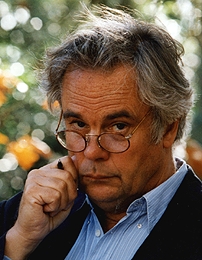London riots is nothing new

By
Jonathan
Power
TFF
Associate since 1991
Comments directly to
JonatPower@aol.com
August 18, 2011
There we go again. Riots and mayhem in London. The mob takes to the streets, breaks and burns and then retreats. The press magnify it. Our discernment wanes. Perspective is non-existent. A poll says that a large majority of the gentlemanly British with their deep attachment to law, due process and human rights dating back ten centuries to the Magna Carta, think live bullets should have been used against the rioters.
Are we mentally back in the times of the Peterloo Massacre when in 1819 the cavalry with drawn swords charged on demonstrators demanding reform in parliamentary representation? Or in Amritsar in British India in 1919 when Brigadier Reginald Dyer ordered his troops to fire on an unarmed crowd at a religious celebration killing over a thousand, which even Winston Churchill called “a monstrous event”?
God forbid! But judging from the outcry one may be excused if for a moment one thinks it. The press overdid it. This is not to say that for 24 hours the mob seemed out of control and the police inept and on the back foot. But it wasn’t as socially polarising as the Notting Hill riots of 1958 nor the Brixton riots of 1981 and 85, two districts of London where Caribbean immigrants have settled in large numbers and where the confrontation, unlike on this occasion, was starkly black against white. This time it was the unemployed and alienated plus voyeurs of all colours (albeit a majority were black) who took on the police.
It wasn’t as dangerous as the television pictures of the fires seemed to illuminate. There were half a dozen graphic fires captured vividly on TV, but most of the mayhem was pretty low level, looting small amounts from inexpensive shops. Compared with the Los Angeles riots of 1992 when 53 people died, it was small beer.
We should go back to the eighteenth century to gain some perspective. London was a teeming rabbit warren of a city- narrow streets replete with filthy, smelling, tenements with whole families in single room. For want of elbow room people poured onto the overcrowded streets to socialize, to drink, to rob and sometimes to protest.
The “mob” could coalesce in a minute over some slight or a wrong. Rioting was a regular event. Much of the time there was a remarkable degree of toleration of public disorder by the authorities. Even the Lord Mayor of London did not appear to mind a mob if it served his purposes. Newspapers sometimes supported the rioters. In 1719 the writer Daniel Defoe wrote in the Weekly Journal, in response to a complaint that the paper’s support for the weavers encouraged rioting, “Was it not absurd to dictate patience and forbearance to those in their conditions?”
In the 1770s the propensity to take to the streets began to decline. But when riots did happen they came with a bang- as with the Gordon Riots of 1780.
It began peacefully with a march by Protestants on the House of Commons to present their petition against the Catholic Relief Act, which they regarded as “popery”. Stirred up by an incendiary speech by Lord George Gordon, Catholic chapels were attacked.
.
A laid back Lord Mayor was reported as saying, “the mob had got hold of some people and some furniture and were burning them, and there was no harm in that.” Many liberal observers blamed the severe economic climate for the riots. The rioters shook the city to its core. The army was called in and 285 people shot dead. Twenty of the rioters were later tried and executed. Charles Dickens immortalised the riots in his novel, “Barnaby Rudge”. Dickens described the rioters as the “very scum and refuse of London”.
Riots may have been less frequent but those that did occur became more violent, especially among people such as coal heavers and silk weavers whose livelihoods were at the mercy of the forces of the Industrial Revolution. The police became tougher- hence the harsh tactics deployed during the Gordon Riots. As a result radical reformist leaders turned their energies to the voluntary society and public meetings. The workers started to form incipient trade unions. Policing was gradually professionalized. A new fabric of social stability was woven. By the end of the century the age of the mob was over.
Mass street life had withered as the city had developed. Robert Shoemaker observes in his book “The London Mob”, “The streets have become arteries characterised by movement, making it much harder for pedestrians to linger and mobs to form.”
Is rioting in the British blood? Not at all. As rioting in the eighteenth century was diminished so can that of the present day be. Some stick, some carrot- and a better perspective, especially by the press.
Copyright © 2011 Jonathan
Power
Last 
 Next
Next
Jonathan Power can be
reached by phone +44 7785 351172
and e-mail: JonatPower@aol.com
Jonathan
Power
2007 Book
Conundrums
of Humanity
The Quest for Global Justice
“Conundrums
of Humanity” poses eleven questions for our future progress, ranging
from “Can we diminish War?” to “How far and fast can
we push forward the frontiers of Human Rights?” to “Will
China dominate the century?”
The answers to these questions, the author believes, growing out of
his long experience as a foreign correspondent and columnist for the
International Herald Tribune, are largely positive ones, despite the
hurdles yet to be overcome. Martinus Nijhoff Publishers, London, 2007.
William Pfaff, September 17, 2007
Jonathan Power's book "Conundrums" - A Review
"His is a powerful and comprehensive statement of ways to make the world better.
Is that worth the Nobel Prize?
I say, why not?"
Tell a friend about this column by Jonathan Power
Send to:
From:
Message and your name
Get
free articles & updates
|